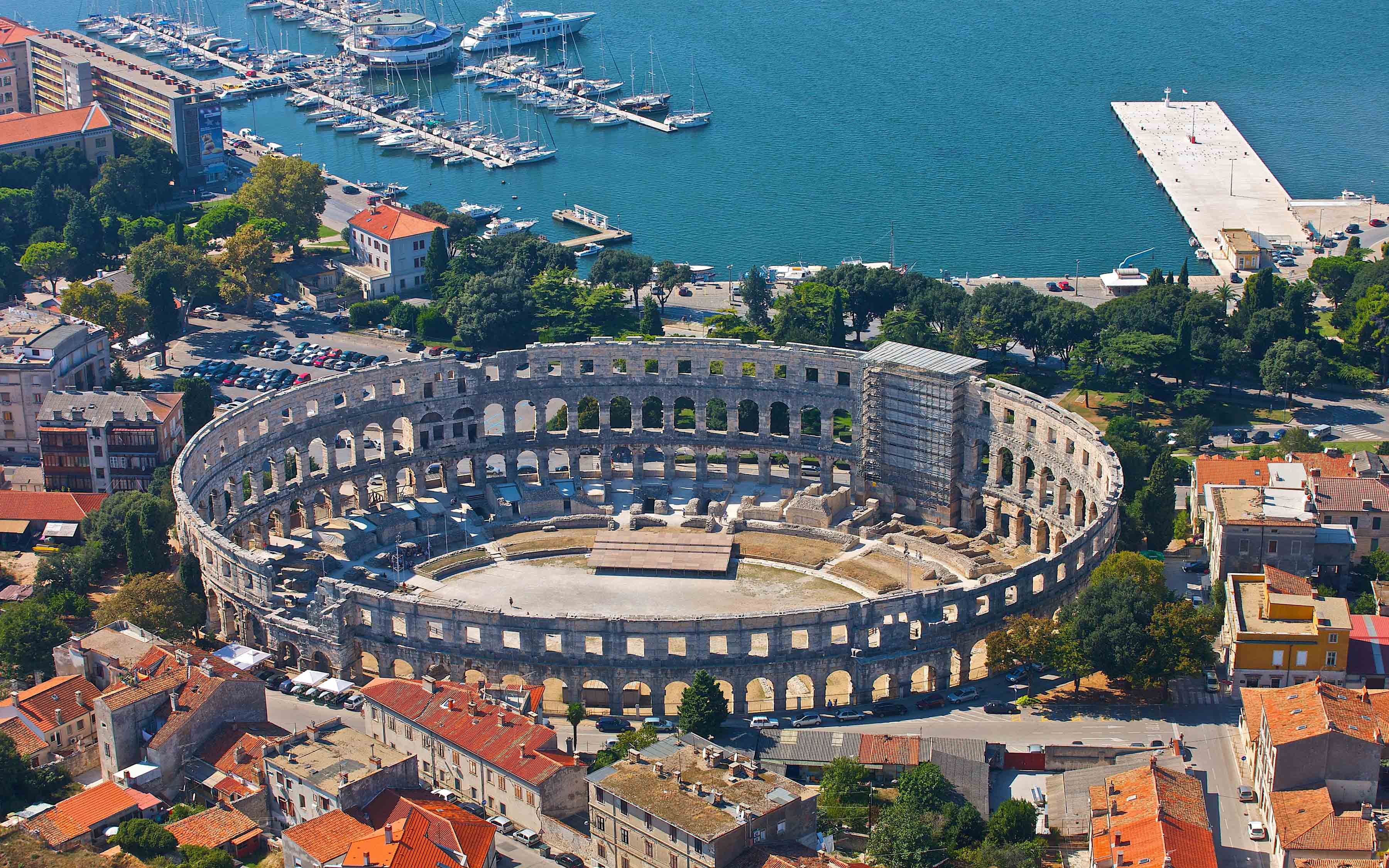
Arena Panorama Amfiteatar In Pula, Croatia Hd Wallpaper
It is located in the heart of the port city of Pula, about 200 meters from the historic center, from where it can be easily explored on foot during a stroll through the city. The Pula Arena is over 2,000 years old and was completed in 81 AD. In particular, the façade made of white limestone is still very well-preserved.
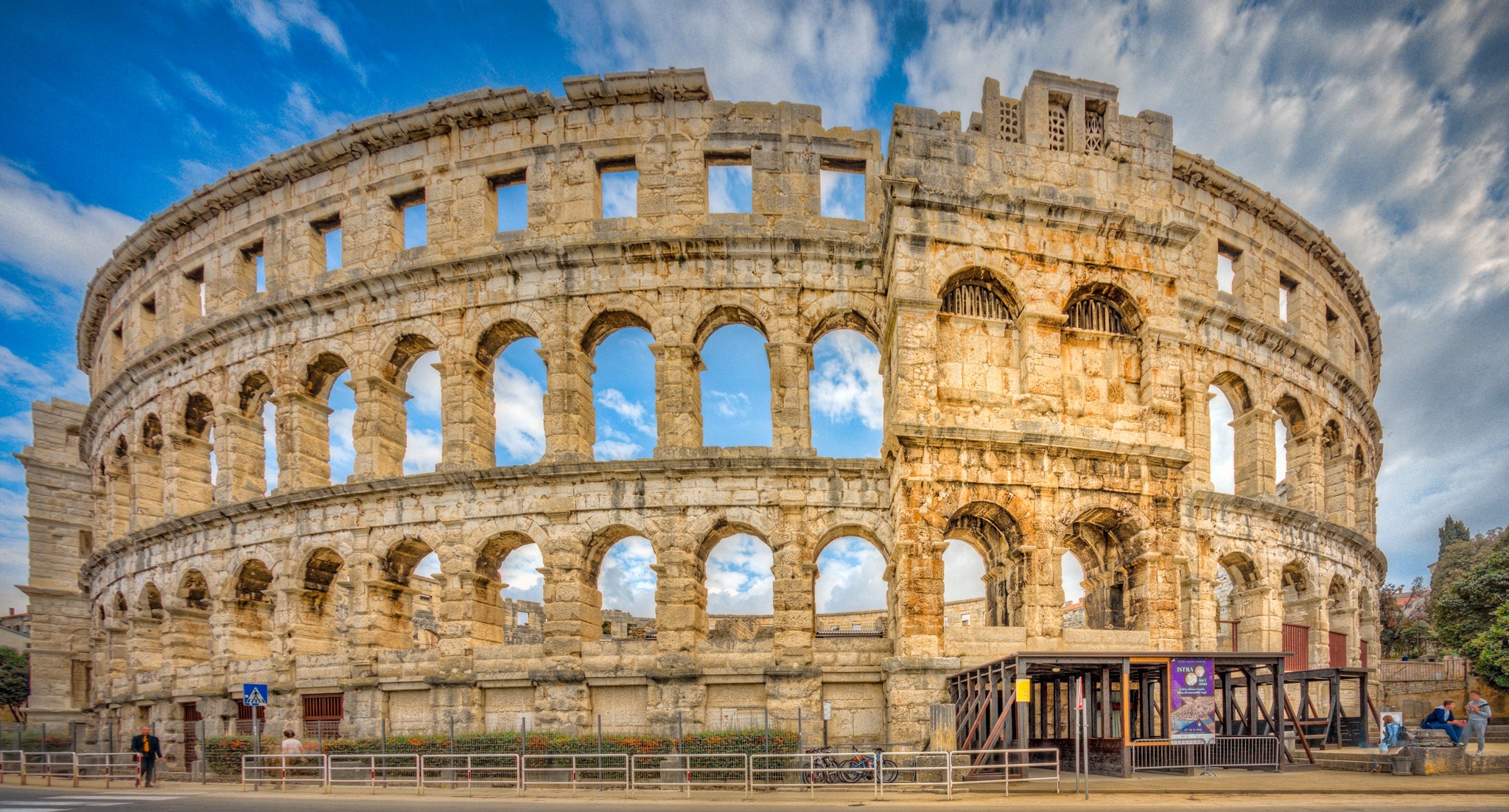
The Roman Amphitheater of Pula William Horton Photography
American and Imagine Dragons will now perform two concerts at Pula Arena in Croatia after their first concert sold out. The famous Las Vegas quartet will play at Pula Arena on 8 and 9 August 2023.
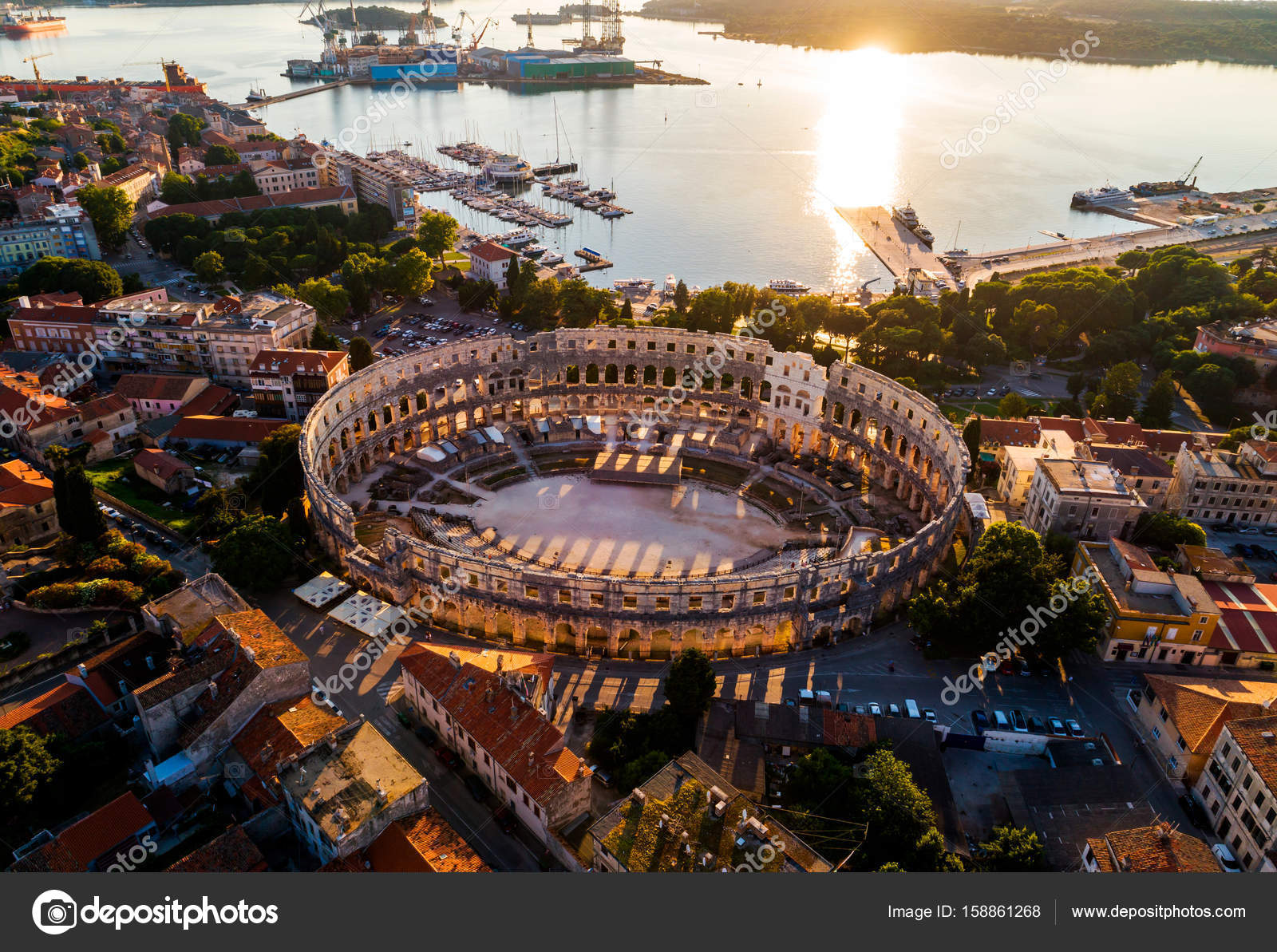
Pula Arena bij zonsondergang het Romeinse amfitheater van Pula, Kroatië — Stockfoto © conceptw
Located in Croatia's Istria County, the Pula Arena is one of the world's six largest surviving Roman arenas. Constructed between 27 BC and 68 AD, during the reign of Emperor Vespasian, at the same.
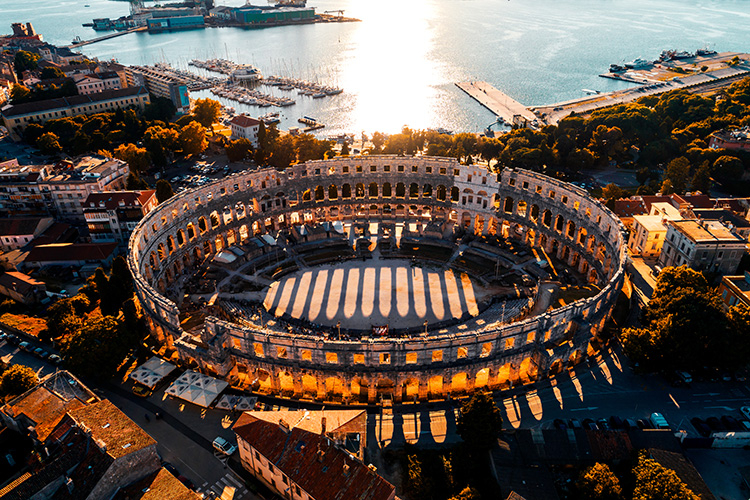
Pula Arena History and Facts History Hit
Pula Arena. The Pula Arena is the top thing to do in Pula and one of the most iconic landmarks in all of Croatia! Comparable to the Colosseum in Rome, the arena is one of the biggest amphitheaters in the world, built in 1AD by the Romans as a place for gladiator and animal fights. These days, the site is still used for festivals and concerts.
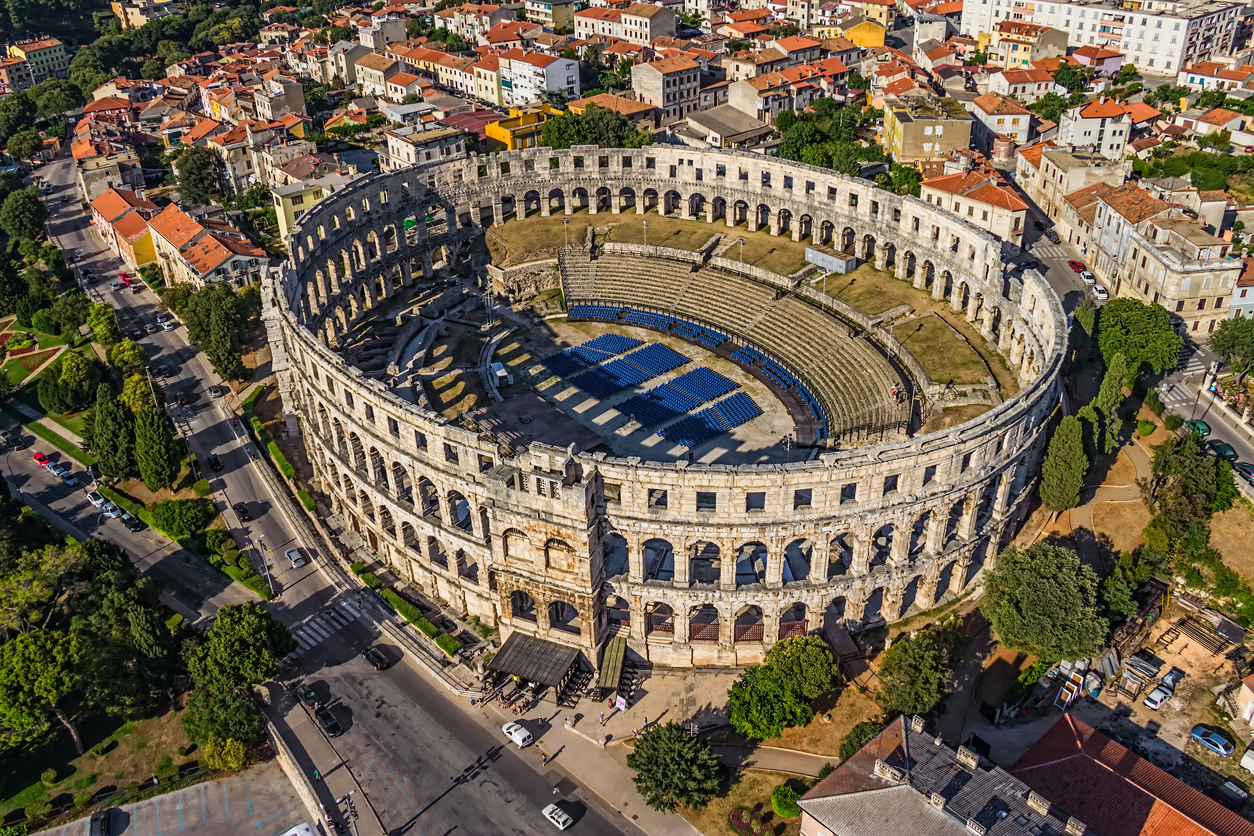
Top 5 Things to do in Pula Croatia Visit Pula Things to do in Pula
A rare example among the 200 surviving Roman amphitheatres, it is also the best preserved ancient monument in Croatia. The Arena was built between 27 BC and 68 AD, as the city of Pula became a regional centre of Roman rule, called Pietas Julia. The name was derived from the sand that, since antiquity, covered the inner space.

Things to do in Pula, Croatia Travel Guide for the Gem of Istria Drifter
The Pula Arena is a Roman amphitheatre located in Pula, Croatia. It is the only remaining Roman amphitheatre to have four side towers entirely preserved. It was constructed between 27 BC and AD 68, and is among the world's six largest surviving Roman arenas. The arena is also the country's best-preserved ancient monument.
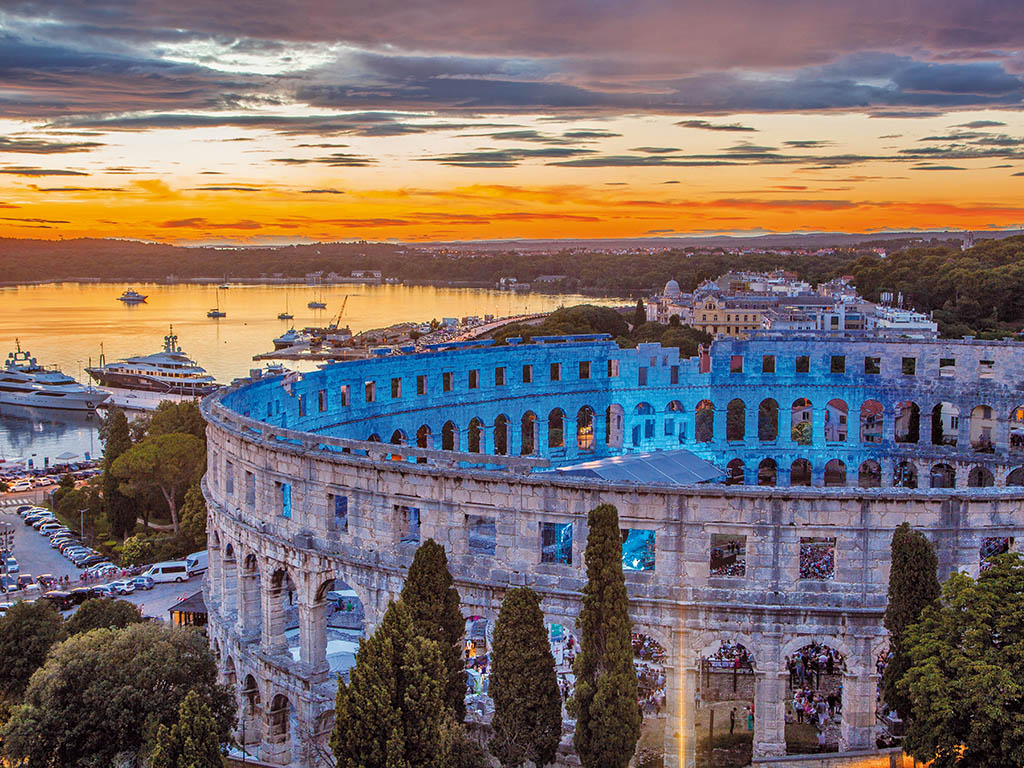
Pula Kroatien Reiseführer von Kroati.de √
The Pula Arena is a Roman amphitheater located in Pula, on the southern tip of the Istria peninsula, north-western Croatia. It has been estimated that there are around 230 Roman amphitheaters that are still surviving today. The Pula Arena is unique, as it has often been claimed that this amphitheater is the "only remaining Roman amphitheater.

Pula Arena Croatia's Ancient Roman Amphitheater Decide Your Adventure
Pula Arena, also known as Pula Amphitheatre, is a dramatic historic Roman amphitheatre in Pula, Croatia. Built in the 1st century AD, Pula Arena was constructed during the reign of the Emperor Vespasian who was also responsible for founding the Colosseum. Able to accommodate approximately 20,000 spectators, Pula Arena would have played host to.

Pula Arena Croatia Week
The Pula Arena (Croatian: Pulska Arena; Italian: Arena di Pola) is a Roman amphitheatre located in Pula, Croatia.It is the only remaining Roman amphitheatre to have four side towers entirely preserved. It was constructed between 27 BC and AD 68, and is among the world's six largest surviving Roman arenas. The arena is also the country's best-preserved ancient monument.
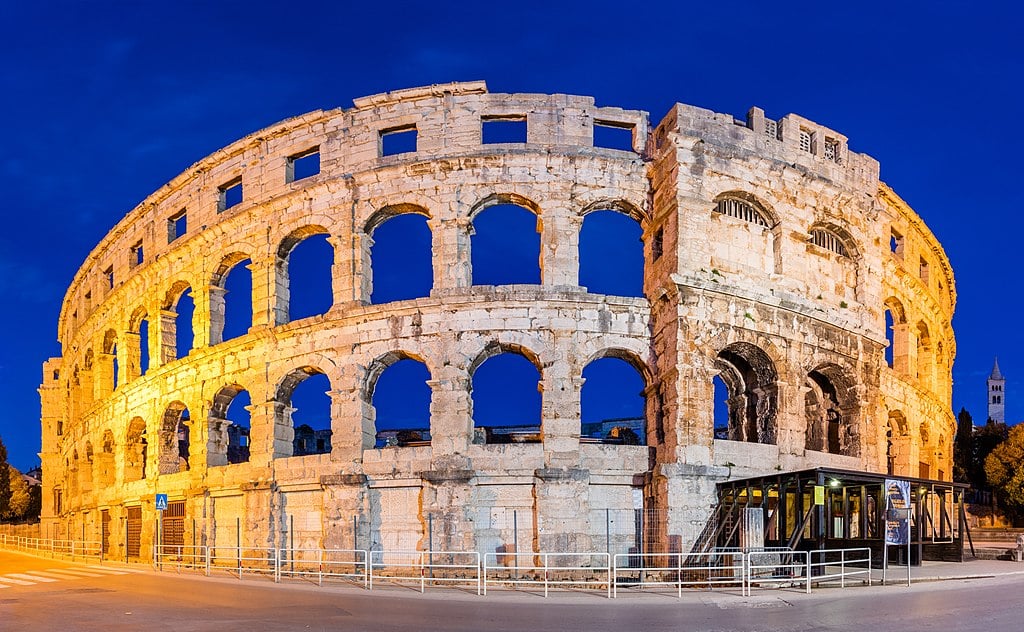
Record Number of Visitors to Pula Arena Croatia Week
Since the 1930s, the Pula Arena has been the scene of various public functions including concerts, military ceremonies, and, surprisingly, hockey games. This is after it underwent significant repairs and restorations in the 19th century. The Pula Film Festival, arguably the most famous film festival in Croatia, takes place at the Pula Arena.
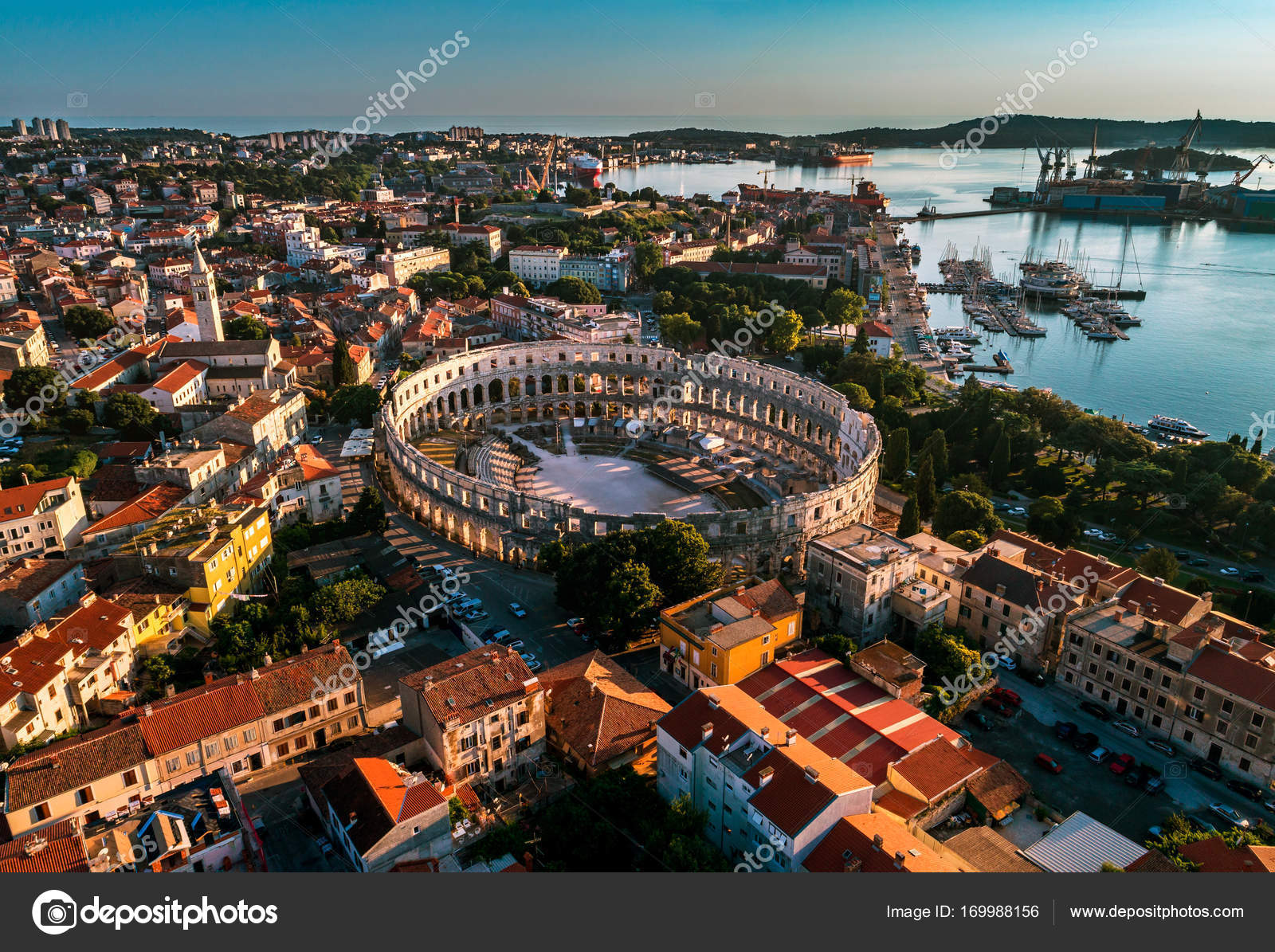
Pula Arena at sunset, Croatia — Stock Photo © conceptw 169988156
The Pula Amphiteatar-Arena Pula, or the Pula Arena as it's fondly known, has a rich tapestry of history that beckons the curious traveler. Built between 27 BC - 68 AD, it showcases the might of the Roman Empire under Emperor Vespasian's reign, the same emperor behind Rome's Colosseum. Initially constructed for gladiatorial combats, it.
Roman Arena in Pula, Croatia during World Cup final r/europe
Discover Pula Arena in Pula, Croatia: One of the best-preserved Roman amphitheaters is still used today, but for less brutal events.. Pula Arena, May 2016 matthewhollett (Atlas Obscura User)

Pula Arena in Croatia and Pula City Old Town Stock Image Image of croatia, heritage 153798683
Pula Amphitheater. Also known as the Pula Arena, this magnificent structure is the highlight of any visit to Pula and is one of the top sights in Istria. It was initially built during the reign of Emperor Augustus (31BC-14AD) and was enlarged during the reign of Claudius, finally taking shape during the reign of Emperor Vespasianus (69-96AD).

Pula Arena Exceptional Roman Amphitheater in Croatia Still Alive and Kicking Ancient Origins
Arena - Amphitheater. The most famous and important monument, the starting and ending point of every sightseeing tour is the Amphitheater, popularly called the Arena of Pula, which was once the site of gladiator fights. It was built in the 1st century AD during the reign of Emperor Vespasian, at the same time as the magnificent Colosseum in Rome.

Pula Arena
A one-way ticket costs 2.70 €. If you plan to use city buses extensively, you might consider buying prepaid cards. It costs 9.3 €, out of which 4 € is a cost of a card, while 5.3 € goes toward riding credit. The cost of a one-way ticket goes down to 0.9 € for Zone 1, 1.5 € for Zone 2, and 2.3 € for Zone 3.
Soccer game played at the most ancient stadium in the world, at Pula Arena in Croatia. This is
Pula Arena Amphitheater Admission Ticket. 42. Ancient Ruins. from . $12.82. per adult. Pula, Rovinj & Panoramic Istrian Coast from Rijeka. 1. Bus Tours. from . $128.11.. The amphitheater is called Arena, in Croatia, and is the largest and best-preserved Roman monument in the country, and is even one of the 6 largest in the world..